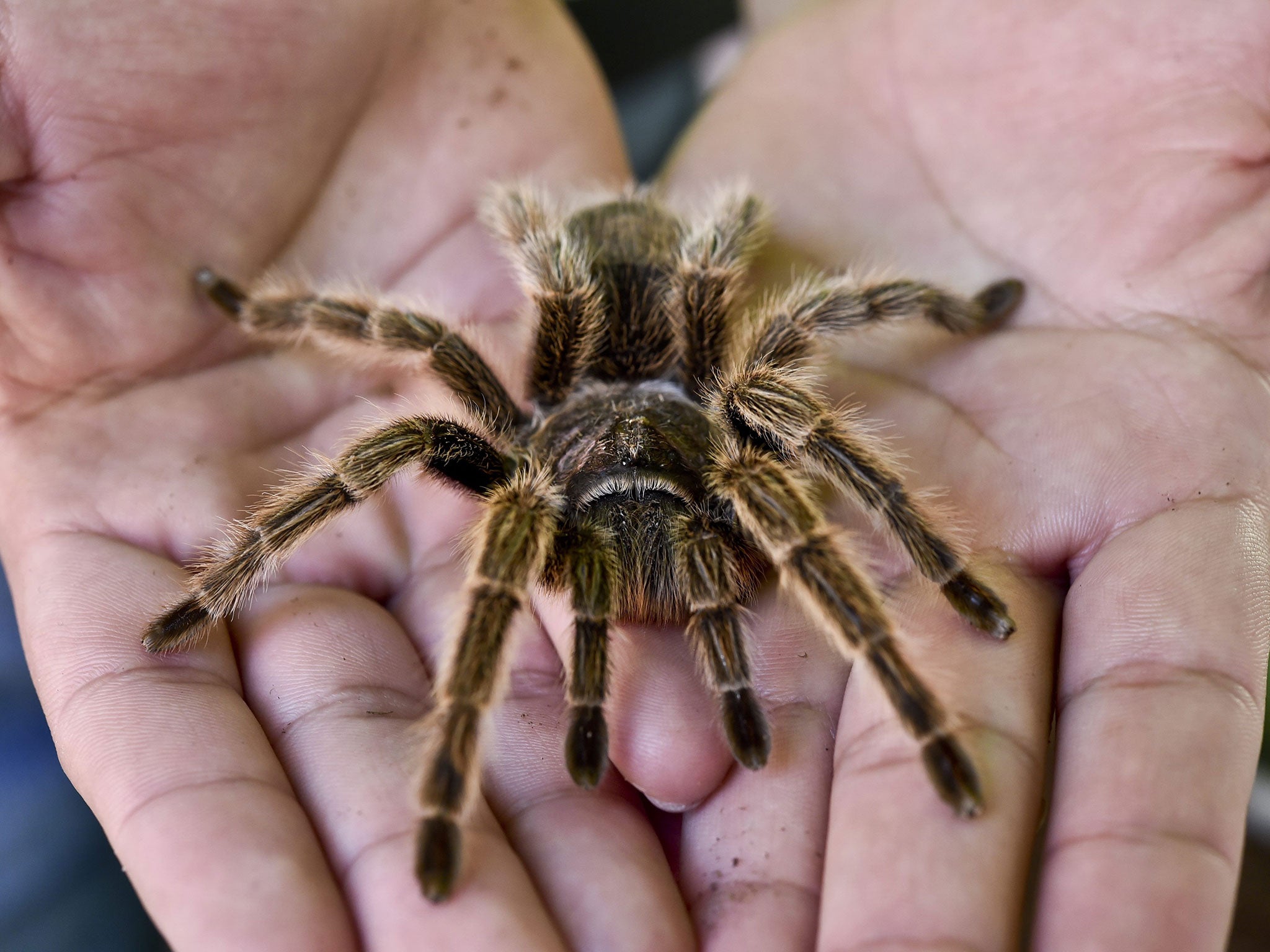Fear of spiders became part of our DNA during evolution, say scientists
4% of the UK population are scared of spiders

Your support helps us to tell the story
From reproductive rights to climate change to Big Tech, The Independent is on the ground when the story is developing. Whether it's investigating the financials of Elon Musk's pro-Trump PAC or producing our latest documentary, 'The A Word', which shines a light on the American women fighting for reproductive rights, we know how important it is to parse out the facts from the messaging.
At such a critical moment in US history, we need reporters on the ground. Your donation allows us to keep sending journalists to speak to both sides of the story.
The Independent is trusted by Americans across the entire political spectrum. And unlike many other quality news outlets, we choose not to lock Americans out of our reporting and analysis with paywalls. We believe quality journalism should be available to everyone, paid for by those who can afford it.
Your support makes all the difference.Arachnophobia could be a product of human evolution, according to new research.
Spiders presented such a great danger to humans during the early evolutionary stages that a fear of the species became part of our DNA.
In Africa, early in human evolution, those with a keen ability to spot the creatures outlived their less wary counterparts, according to The Sunday Times.
Joshua New of Columbia University in New York said: “A number of spider species with potent, vertebrate-specific venoms populated Africa long before hominoids... and have co-existed there for tens of millions of years.”
“Humans were at perennial, unpredictable and significant risk of encountering highly venomous spiders in their ancestral environments.
“Even when not fatal, a black widow spider bite in the ancestral world could leave one incapacitated for days or even weeks, terribly exposed to dangers.”
The study tested how quickly people could spot a spider when presented with a number of other images.
Of the 252 people reviewed in the study, most recognised the spiders much quicker than other images known to induce fear, such as flies and needles.
There are, however, other theories that have been suggested to explain human fear of spiders.
Plymouth University Psychology professor, Jon May, suggested that it is their angular legs, dark colours and unpredictable movements that make archnids so unpalatable to humans.
Professor May said: “Spiders just tick all these boxes, and like any phobia, when it builds up in someone’s mind they can become scared even seeing a picture.
”We like bright-coloured butterflies and ladybirds, but spiders are dark coloured with long angular legs – and the shape and colour both have strong negative associations.
“We are also very sensitive to seeing things moving out of the corner of our eye and immediately notice it, and insects move quickly and unpredictably.”
In contrast to the research from Columbia University, May has also suggested that this fear is developed through social conditioning , as children are much more likely to become arachnophobic if they see parents or siblings reacting to the creatures in a certain way.
Join our commenting forum
Join thought-provoking conversations, follow other Independent readers and see their replies
Comments